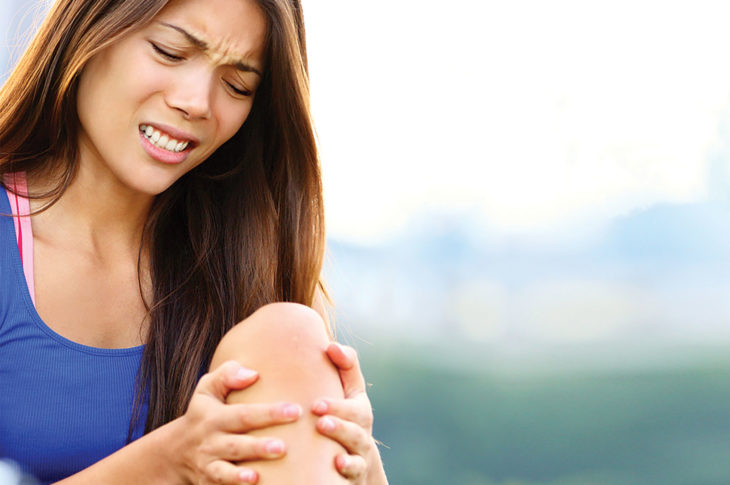by Dr. Joel A. Tucker//
Summertime on the Mississippi Gulf Coast brings lots of outdoor fun with activities such as boating, golfing, running, biking and swimming; however, the increase in physical activity can sometimes lead to an increase in symptomatic knee pain. Many risk factors for knee pain have been identified which include playing certain sports, prior injuries, lack of flexibility or strength, and being overweight. Below are five causes of knee pain that I see in my clinic every week.
PATELLOFEMORAL PAIN SYNDROME
Patellofemoral pain syndrome is pain in the front of the knee around the kneecap. This pain will typically increase when you sit for long periods with your knee bent, squat, or are on stairs. Physical therapy is often beneficial to strengthen and stretch the knee, and simple treatments such as ice and rest can help with pain.
PES ANSERINE BURSITIS
Pes anserine bursitis also occurs on the front of the knee but more on the medial (inside) side of the knee. Bursitis is inflammation of the bursa. Bursas are small fluid filled sacs that help to cushion tendons where they contact bone. Pain tends to increase with exercise, kneeling and climbing stairs. Physical therapy to stretch the hamstring muscles tends to help.
ILIOTIBIAL BAND FRICTION SYNDROME
Iliotibial band friction syndrome occurs most frequently in distance runners but can be seen in many other scenarios. It tends to cause pain on the lateral (outside) aspect of the knee. The iliotibial band is part of a muscle and tendon complex that starts in the pelvis and ends just below the knee. The pain is caused when the iliotibial band becomes so tight that it rubs on the outside of the femur (thigh) bone. Stretching this band is the key to treating this problem.
MENISCUS TEAR
A meniscus tear can cause pain, swelling and locking of the knee. The meniscus is a C-shaped cartilage that sits inside the knee and acts as a cushion to disperse forces. There is a medial and a lateral meniscus in each knee. The causes of tears vary from sport injury, kneeling, and wear and tear over time. Injury is usually caused by a twisting motion to the knee. Treatment of the meniscus tear depends on the type of tear and location but can range from rest and observation to arthroscopic surgery.
OSTEOARTHRITIS
Osteoarthritis is caused by loss of the articular cartilage (cushioning) of the knee. This is different than the meniscus cartilage. This loss of cartilage can occur from wear and tear, injury, and disease of the knee. Treatment of osteoarthritis varies based on the severity of the disease and symptoms but ranges from anti-inflammatory medications, lifestyle changes, injections, and knee replacement surgery.
While not all knee pain is immediately serious, when left untreated it can lead to increasing pain and damage to the joint. You should see your doctor if you can’t bear weight on your knee, have knee swelling, see deformity of your leg, feel that your knee is locking or “giving out,” or have persistent pain.
Dr. Tucker joined Bienville Orthopaedic Specialists, LLC in 2011 and specializes in general orthopaedics and adult reconstruction surgery. He is certified by the American Board of Orthopaedic Surgeons.


